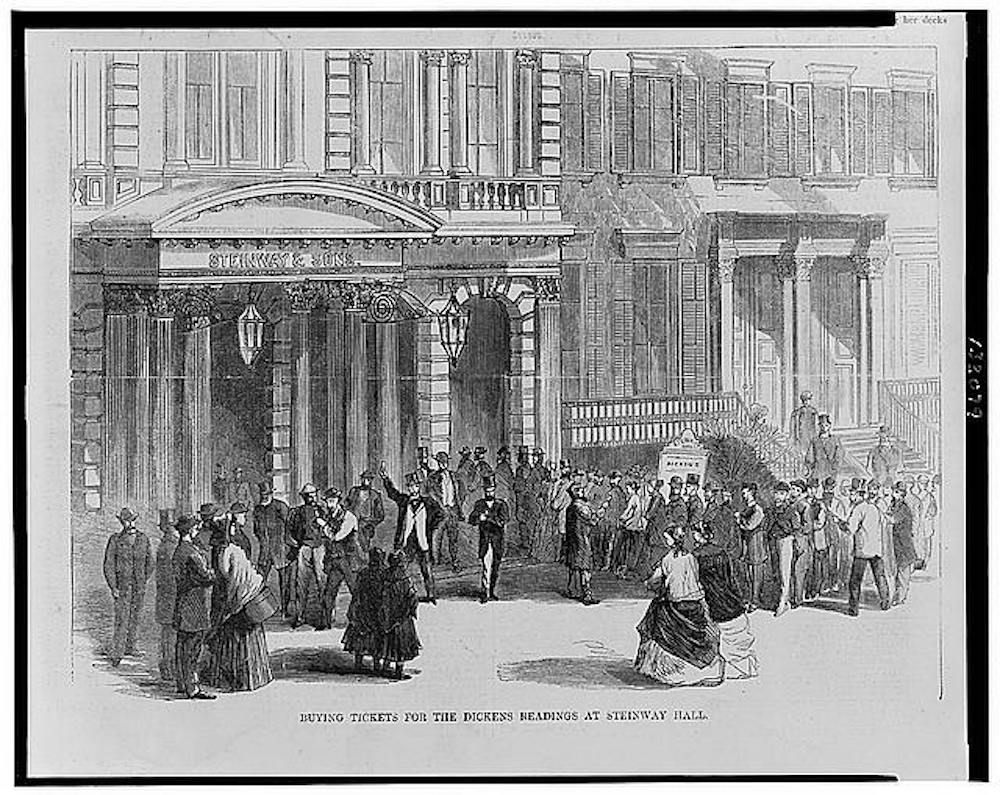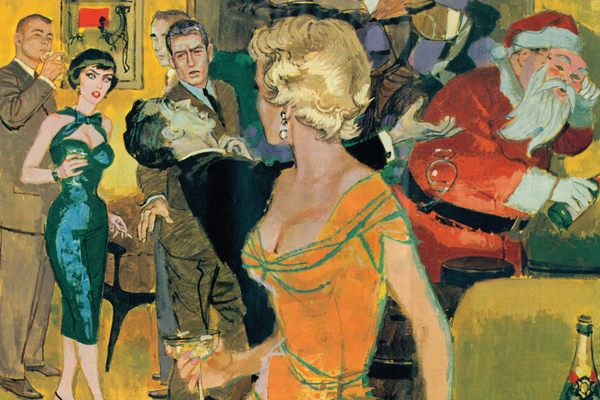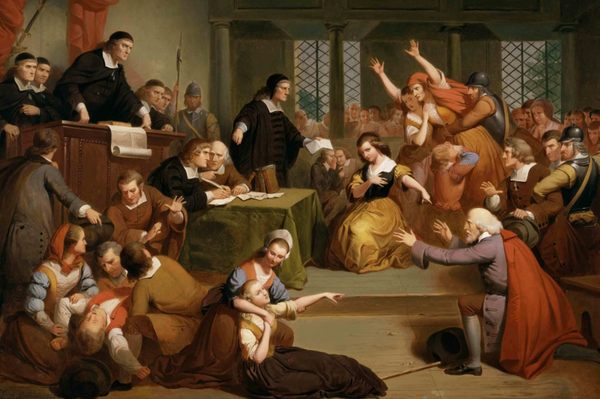Charles Dickens Couldn’t Stop Tinkering With ‘A Christmas Carol’
He revised and revised whenever he took his show on the road.

Charles Dickens’s A Christmas Carol, published in 1843, swiftly entered the holiday-season canon—the sort of story readers return to year after year, wherever there’s a crackling fire, a dusting of snow, and a mug of eggnog at hand. But when Dickens gave public readings from the text, the story changed a bit from one performance to another. His marked-up stage copy of the book, on view at the New York Public Library, gives readers a peek into the writer’s mind as he reworked his spirited prose.
Dickens intuited that his devoted public would get a kick out of listening to him read from the already beloved text, and he spent decades taking his A Christmas Carol act on the road. He devised different voices and styles for each character, so Tiny Tim sounded nothing like Ebenezer Scrooge. Writers of the period commonly traveled to give lectures, but “reading from your own work was new, and his degree of literary celebrity took it into the stratosphere,” says Carolyn Vega, curator at the Berg Collection at the New York Public Library.

People turned out in droves. “Enthusiastic crowds have filled the halls to the roof each night, and hundreds have been turned away,” Dickens wrote to his friend John Forster about readings in Dublin in March 1867. Attendees attempted to pack in even tighter, Dickens continued, asking for “chairs anywhere, in doorways, on my platform, in any sort of hole or corner.”
The author received a warm reception in America, too. When he landed in Boston for a series of readings in fall 1867, the city was “in exstacies,” with 8,000 tickets sold, the Brooklyn Daily Eagle reported. The Eagle predicted that, when Dickens made his way to New York City, “the great novelist will meet with a no less cordial but more sensible reception,” and would find the venues “none too large for the audiences his readings will draw.” Dickens spent that December “basically ping-ponging between New York and Boston,” Vega says. He’d do a few readings in one city, hop into the coach bound for the other, and then repeat the whole routine. There was such fever for admission to Dickens’s readings at New York City’s Steinway Hall, the Buffalo Commercial reported, that “speculators have got hold of the tickets and are endeavoring to sell them at extravagant prices.” Forged tickets were thought to be floating around, too.
Dickens probably could have recited the whole story from memory, but the book itself was part of the appeal. “Even before he started the series of readings, he knew [the book] inside and out,” Vega says. “By the end of doing it for 20 years, he knew exactly what hooks the audience, what worked and what didn’t, but always went up with the book in hand. The idea of Dickens reading to you was the performance you were paying for.” He sat or stood behind a tall desk, with the volume always at hand—even if it was much too far from his face for the text to be easily decipherable.

The book was a prop and a prompt, and Dickens toted it with him and annotated it relentlessly. Over the years, Dickens wanted to fit stories beyond his Christmas fable into a single performance, which meant that each needed to shrink in order to fit into the allotted time. Dickens took a regular, off-the-shelf copy of A Christmas Carol, had the binding removed, and then set the pages onto larger ones, whose margins had plenty of room for notes.

Some of these are standard-issue edits, such as struck-through sentences or entire canceled paragraphs. (The text got leaner over time, Vega says.) Other notes evoke reminders like stage directions, such as a note about conjuring a specific tone. Dickens reminded himself to convey a sense of “mystery” just before Scrooge spots Marley’s ghostly face in his door knocker, and to sound “cheerful” when channeling warm tidings from the humbug’s nephew. In edits to another text he performed, Vega says, “he reminds himself that the tone should be ‘very pathetic,’ circled and written large.”
The edits also offer a window into Dickens’s speedy working style. The author often worked serially, submitting stories under deadline pressure, and “you get a sense of that energy when you look at the prompt copy,” Vega says. Some pages have blots and smudges, indicating that he was working fast, loose, and frantically, without waiting for the ink to dry. Until January 7, 2019, library visitors can take a look at Dickens’s copy, and see that a writer’s work is never really done.






















Follow us on Twitter to get the latest on the world's hidden wonders.
Like us on Facebook to get the latest on the world's hidden wonders.
Follow us on Twitter Like us on Facebook